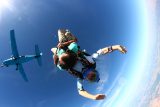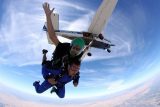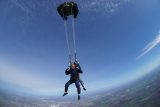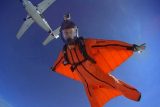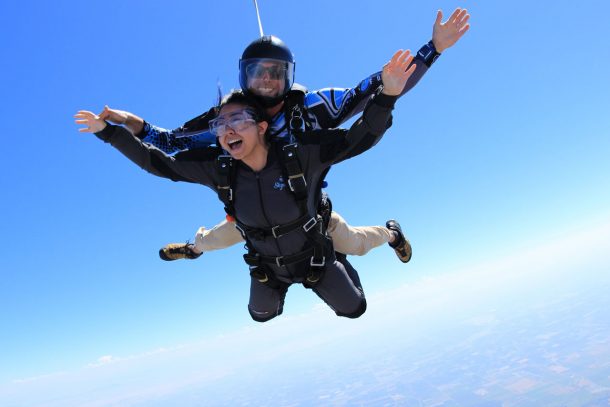What is the terminal velocity of a skydiver? 120mph, on average. The terminal velocity in skydiving can shift around a bit depending on a few variable factors, making the question, “How fast is terminal velocity?” a bit tricky to answer. BUT, we’ve got ya covered with a breakdown of all the specifics: READ ON!
WHAT IS TERMINAL VELOCITY?
Let’s flashback to physics class for a second – ugh, we know, but hang with us! Many people assume gravity is the only player dictating a skydive, but there are actually two factors that create terminal velocity: gravity and air molecules. To visualize both of these players working as a team, imagine dropping something off a skyscraper, or jumping out of something really, really high up – like an airplane. *wink wink*
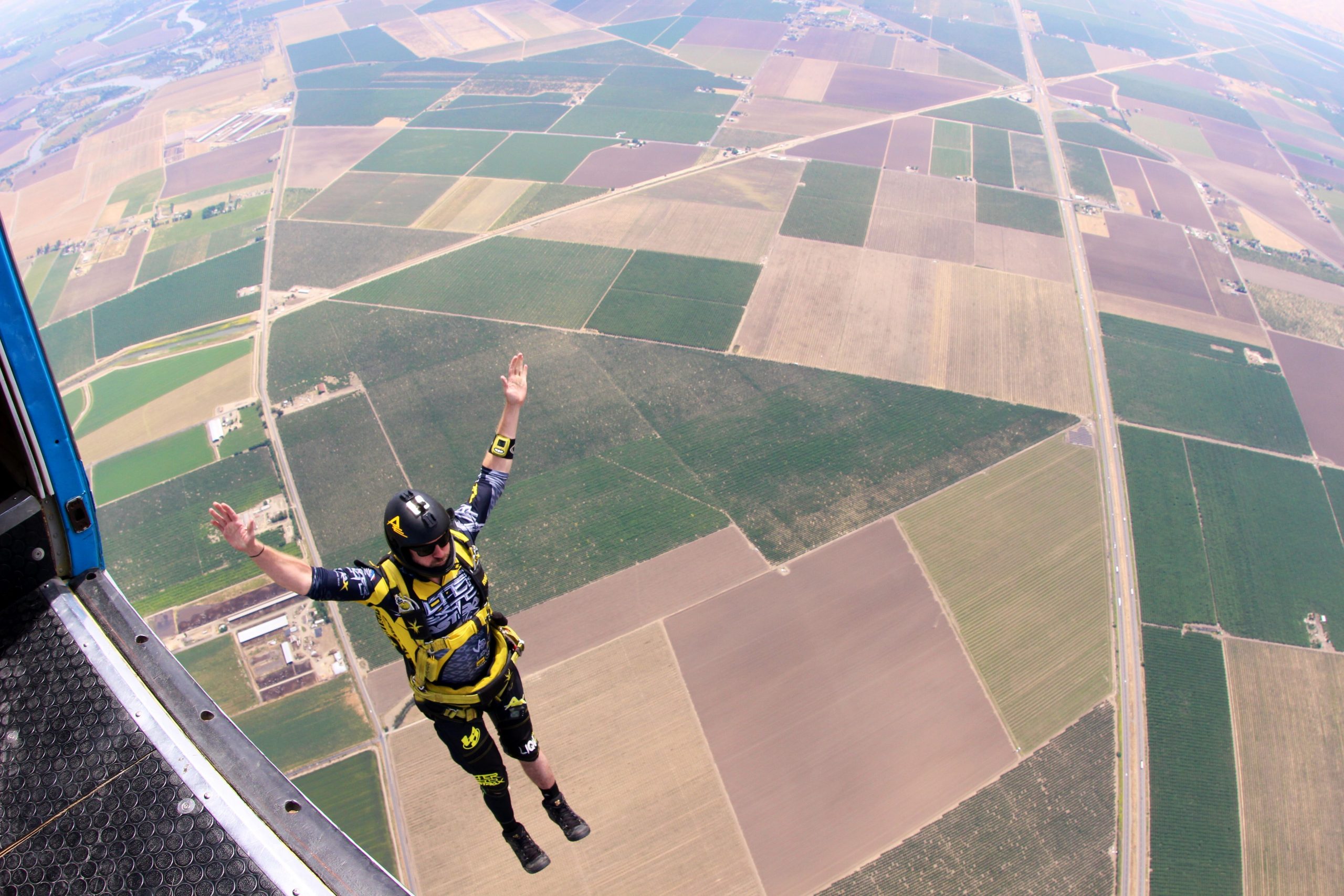
As you start falling, your speed (velocity) gradually increases, because gravity is doing its job. However, as you gain speed, you also gain something else: resistance. The resistance, or drag, is created by bunches of little air molecules that push back against gravity. So, do you hit terminal velocity when skydiving and actually reach a point where you stop accelerating? Yes!
Think of it this way: The air molecules are your little buddies cheering you on during your skydive. At first, they’re like, “Heck yeah!” and there are only a few of them, so you’re able to easily push them out of the way (and increase speed). However, the longer you fall, the more and more molecule buddies show up. And, although they’re rooting for you, they are also acting against gravity to prevent you from turning into an inferno ball trucking through the sky. Eventually, the resistance from your molecule pals perfectly counteracts the pull of gravity, and this balance is called terminal velocity.
Plainly: Gravity pulls you down, air molecules push you up, and the equilibrium of the two is your terminal velocity, which is typically around 120 mph when skydiving.

HOW FAST DO YOU FALL WHEN SKYDIVING?
Everyone has a unique terminal velocity that’s dependent upon a few factors:
Weight
Gravitational pull is directly proportional to mass, meaning a heavier skydiver will have a faster initial acceleration and a stronger gravitational pull. This direct correlation means that the resistance must also increase to achieve terminal velocity by matching the effect of gravity.
Surface Area: Body Orientation
Skydivers can fall belly-to-earth, back-to-earth, head-up, or head-down. They can give different inputs, such as pulling their arms closer to their bodies or spreading them out as if grappling with a giant beach ball. Body orientation or maneuvering the extremities allows skydivers to increase or decrease their surface area, which affects their terminal velocity.
Drag
Remember our friends, the air molecules? The more surface area we give them to push back on, the more we can slow our fall rate – this is called increasing your drag. Drag can be increased by baggier attire or simply taking up as much room as possible with your body/spreading out. On the other hand, drag is decreased (and velocity is increased) by making yourself smaller or wearing tight-fitting clothing.
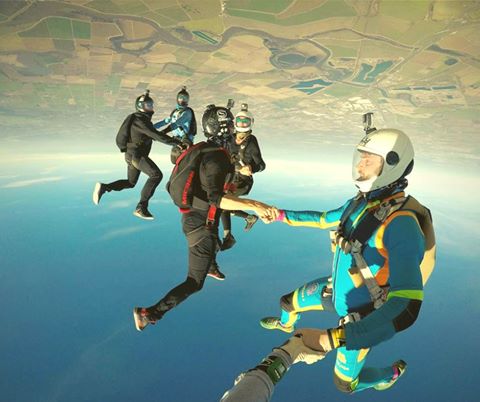
What is a drogue? Tandem skydiving rigs are equipped with an apparatus called a drogue. It sort of looks like a mini parachute, and is deployed by the tandem instructor at the beginning of freefall. Drogues prevent the pair from going too fast, provide stability, and aid in deploying the main parachute.
Air Density
The higher we go, the less dense the air is – there are fewer of our air molecule homies! This means that with increased altitude, there is decreased drag, and therefore, a higher rate of terminal velocity is possible. HALO jumps result in a higher terminal velocity for skydivers for this very reason.
Each of these factors affects terminal velocity, also called fall rate. Skydivers of different shapes, sizes, and experience levels can shred the skies in unison because of their ability to alter many of the factors mentioned above.
For example, if a 200 lb jumper and 100 lb jumper with the same experience level want to do a belly jump together, the 200 lb jumper will probably opt for a baggy jumpsuit, while the 100 lb skydiver will wear something skin-tight. The 200 lb jumper is intentionally increasing their drag to slow down and decrease their fall rate, and the 100 lb jumper is purposefully decreasing their drag, increasing their fall rate, and working to fall faster.
Another scenario for a more advanced pairing would be skydivers jumping in different orientations. For example, if a 200 lb jumper has an average belly-to-earth fall rate (terminal velocity) of 130 mph, and a 100 lb jumper easily flies head-up at around 130 mph, these two can jump together in different orientations. All jumpers mentioned are making minute, but deliberate, adjustments to have successful jumps!
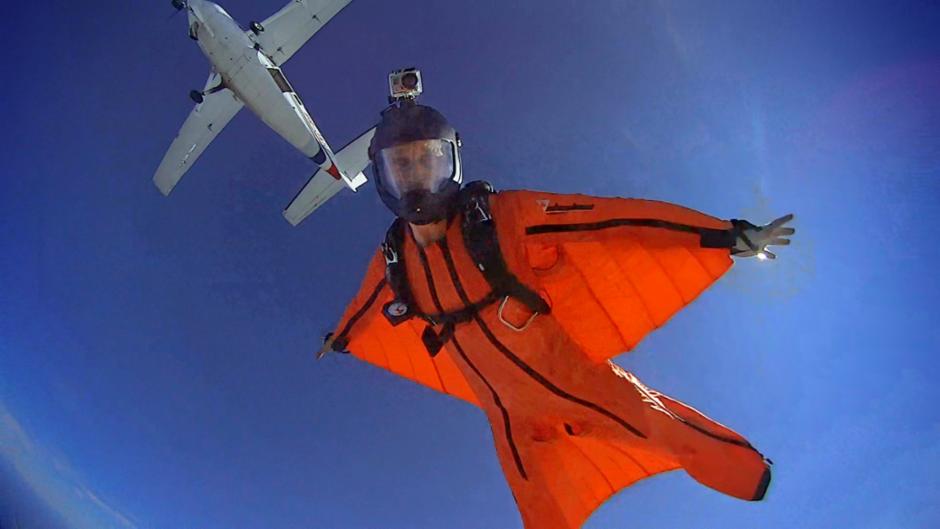
What About Wingsuits?
Winguisters experience a decrease in their vertical terminal velocity and an increase in horizontal terminal velocity, this conversion is the goal of wingsuiting! Wingsuits are similar to parachutes, and they allow the skydiver to implement the principles of aerodynamics to gain forward momentum and speed.
Ready to zoom the skies and feel your terminal velocity? Book today – we can’t wait to jump with you! Blue skies!
